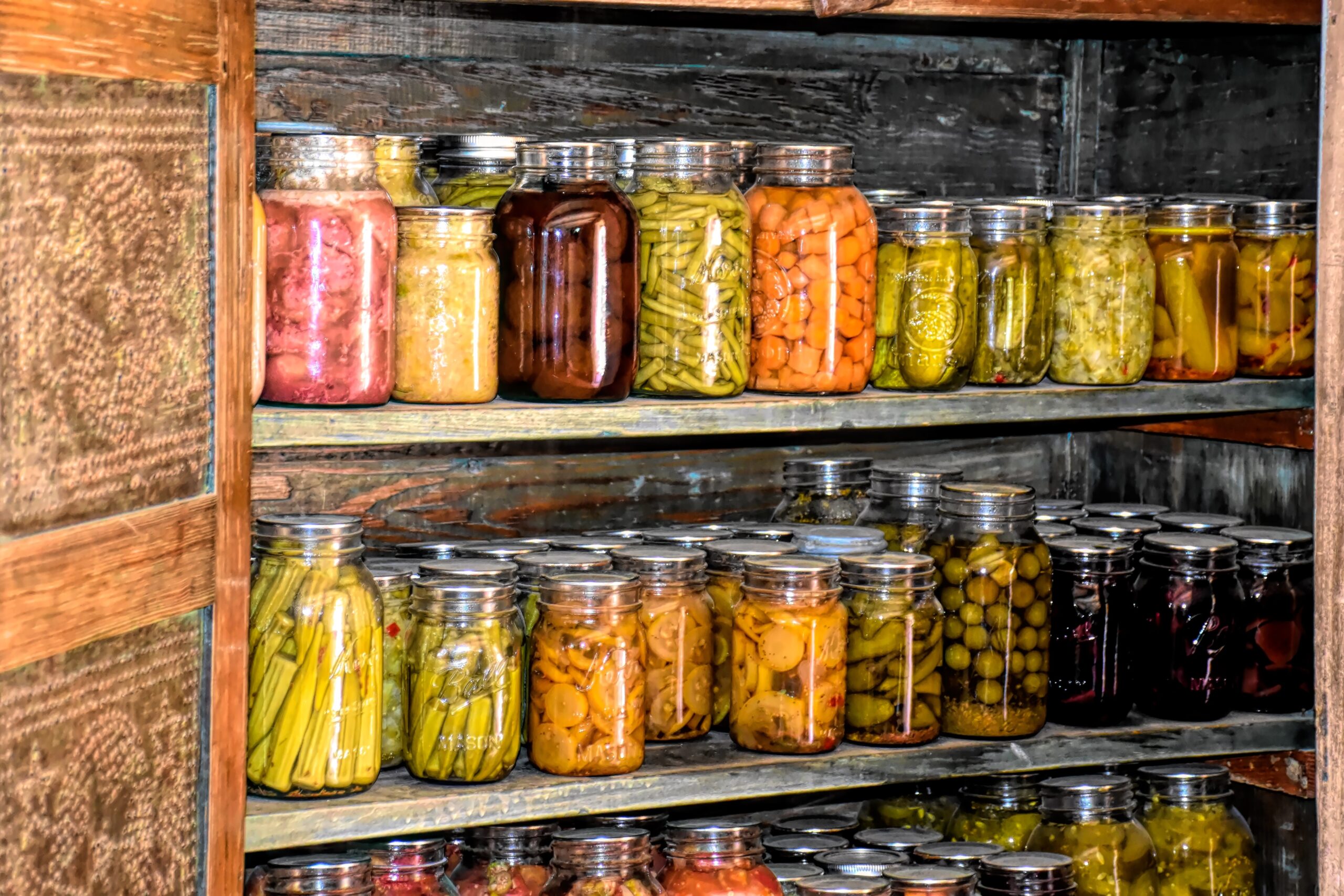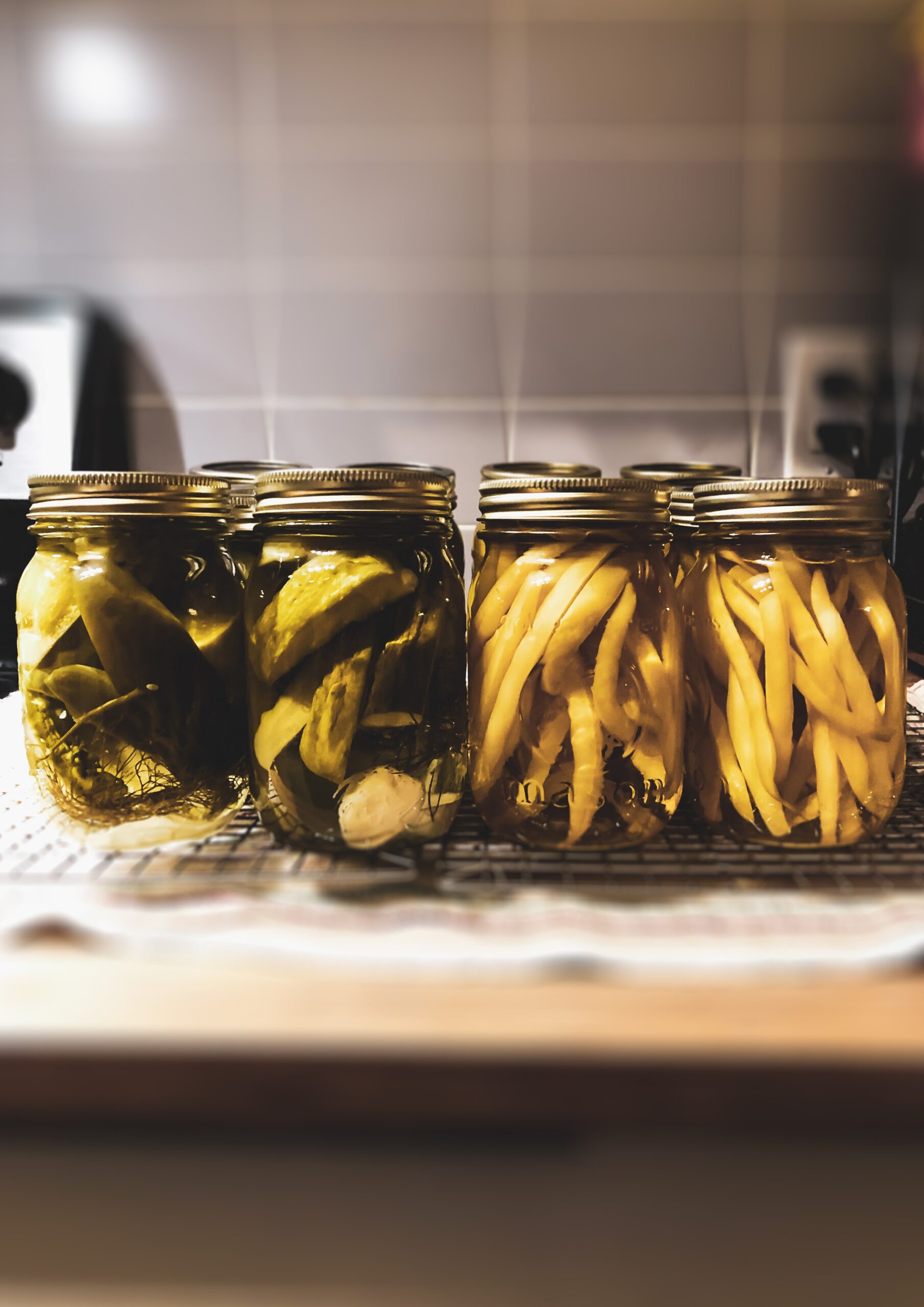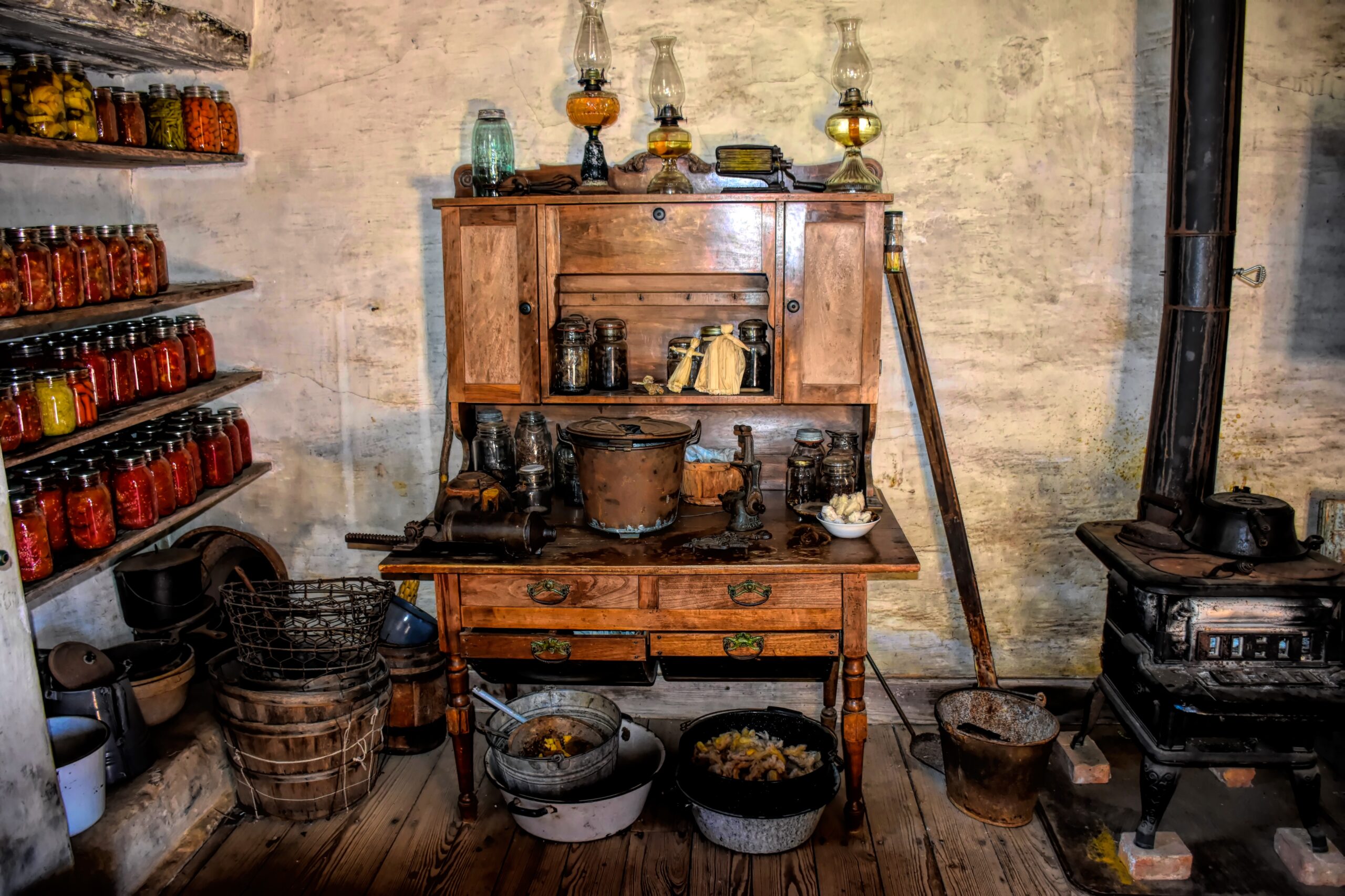Off-grid food preservation methods are essential for individuals and communities that do not have access to dependable electricity or modern infrastructure and are working toward achieving self-sufficiency. These techniques are intended to lengthen the time that perishable foods can be stored, thereby ensuring a consistent supply of food in off-grid or remote areas. Off-grid food preservation methods enable individuals to store and consume food more sustainably, thereby reducing their reliance on external resources. These methods make use of natural resources, conventional wisdom, and low-tech solutions. This article will examine various techniques, such as drying, fermenting, pickling, and root cellaring, and shed light on the importance of these techniques in enabling self-reliance and food security in environments that are not connected to the grid.
What is the Importance of Food Preservation in Off-Grid Living
The ability to preserve food is an essential component of living off the grid and confers several important advantages. It ensures a steady and reliable food supply by extending the lifespan of goods that have a limited shelf life. This is of the utmost importance in off-grid settings, where there may be limited access to modern conveniences such as refrigeration or electricity. In addition, it encourages self-sufficiency and reduces dependence on external resources, both of which are consistent with the fundamental principles of living off the grid. Individuals and communities can navigate seasonal variations in the availability of food and ultimately enhance their resilience and sustainability in environments that are either remote or self-sufficient when they put effective preservation methods into practice.
Techniques for Off-Grid Food Preservation
Off-grid food preservation techniques are important for individuals and communities that intend to provide for their own needs without relying on the conveniences of modern society. The following is a list of effective methods:
Canning
Canning is a method of food preservation that involves sealing food in airtight containers and storing it for an extended period to maintain its quality and prevent it from going bad. The process typically entails placing prepared food, which is typically comprised of fruits, vegetables, or meats, into jars or cans, and then exposing them to heat to kill any microorganisms (such as bacteria, yeasts, and molds) that could cause the food to go bad. Canning can be done using one of two primary methods:
Water Bath Canning
This technique works well for preserving foods with a high acid content, such as fruits, pickled vegetables, jams, and even some tomatoes. After the jars have been loaded with the food and sealed, they are placed in boiling water for the amount of time that has been determined. When the jar cools, the heat causes the microorganisms that cause spoilage to be destroyed, and it also creates a vacuum seal.
Pressure Canning
This technique is utilized for the preparation of foods that are low in acidity, such as vegetables, meats, poultry, and seafood. Because they need to be canned at higher temperatures to be safely preserved, the process of pressure canning utilizes a pressure cooker that is specifically designed for that purpose. Because of the high pressure, temperatures can be raised to levels that are higher than the point at which water boils, which ensures that any harmful microorganisms are eliminated.
Canning is a widely used method for the preservation of food at home as well as for the production of canned goods that are sold in stores because it is an efficient way to store food for extended periods. It is a versatile method that enables people to enjoy seasonal produce throughout the entire year and is an important instrument in the efforts to achieve food security and self-sufficiency.
Smoking and Salting
Smoking
The process of smoking food, which is typically done with meat or fish, involves subjecting the food to smoke that is produced by burning wood chips or sawdust. This not only gives the food its distinctive flavor but also helps to preserve it by dehydrating it and giving it antimicrobial properties.
Salting
The process of salting food involves applying salt to the surface of the food in one of two ways: either by rubbing it directly onto the surface or by submerging the food in a salt solution. The process by which salt works as a preservative is known as “drawing out moisture from the food.” This leaves an environment that is inhospitable to the molds and bacteria that cause food to go bad. Additionally, salt prevents the growth of particular microorganisms, which assists in extending the duration of time that preserved foods can be stored.
Drying and Dehydrating
Both drying and dehydrating food are methods of preserving food that involve the removal of moisture from the product being preserved. When something is dried, it is typically done through the use of natural methods such as air drying or sun drying. However, when something is dehydrated, it is done so through the use of specialized equipment. Both approaches involve lowering the amount of moisture in the food, which prevents the growth of microorganisms that cause food to go bad and enables the food to be stored for longer without becoming rancid.
These methods are especially helpful for preserving fruits, vegetables, herbs, and meats, as they enable the food to keep both its nutritional value and its flavor while simultaneously extending its shelf life.
Pickling
Pickling is a method of preserving food that involves submerging food items in an acidic solution, most commonly vinegar, along with a variety of seasonings and herbs. The acidic environment that is produced by the vinegar prevents the growth of microorganisms that cause food to go bad, such as bacteria and molds.
This procedure not only makes the food last for a longer period but also gives it its unique taste and texture. Cucumbers, onions, peppers, and even some fruits like cherries and watermelon rinds are examples of items that are frequently pickled. Pickling is a method that can be used to create a wide variety of flavorful preserved foods. This is because it is a versatile technique.
Fermentation
Fermentation is a method of preserving food that relies on the activity of beneficial microorganisms, such as bacteria, yeasts, and molds, to transform and preserve food. Fermentation is also known as lacto-fermentation. These microorganisms produce acids, alcohols, and other compounds, which combine to create an environment that is inhospitable to the microbes that cause food to go bad.
The sugars present in the food are converted into a variety of organic acids and alcohol during the fermentation process. This process does more than just preserve the food; it also improves the food’s flavor, aroma, and the amount of nutrients it contains. Typical examples of fermented foods and beverages include sourdough bread, sauerkraut, kimchi, yogurt, kefir, and kombucha. The fermentation process is a time-honored method that not only lengthens the period that food can be stored but also adds new flavors that are distinct and complex to the range of options available to cooks.
Root Cellars
A root cellar is a traditional method of preserving food that involves using underground storage space to maintain a cool, dark, and humid environment to store fruits and vegetables. The natural processes of ripening and decaying harvested produce are slowed down by this technique, which takes advantage of the earth’s natural ability to maintain a cool temperature.
A root cellar creates the ideal environment for the long-term storage of a wide variety of crops by allowing the owner to precisely regulate the environment’s temperature, light exposure, and humidity levels. This method, which has been used for many years, enables individuals and communities to store food in a way that is both environmentally friendly and efficient in the use of energy, particularly in areas of the world where modern refrigeration may not be easily accessible.
Alcohol Preserving
Alcohol preservation is a method that involves preserving food with alcoholic beverages like wine, brandy, or spirits. This method is also known as “alcohol preservation.” Because of the high concentration of alcohol in these beverages, the environment does not lend itself well to the proliferation of microorganisms that cause food to go bad. In addition, alcohol can extract and maintain the flavors of certain foods.
This technique is frequently utilized in the manufacturing of goods such as fruit preserves, in which the fruit is rehydrated in alcohol before being put into storage. It is also utilized in the production of liqueurs, in which fruits, herbs, or spices are steeped in alcohol so that their flavors can be infused into the alcohol.
Alcohol preservation is a versatile method that not only lengthens the time that certain foods can be stored but also imparts a variety of new and interesting flavors on the foods that have been preserved using alcohol. It is particularly well-liked for use in the production of gourmet goods and artisanal items.
Oil Curing
The process of oil curing is a method of preserving food that involves submerging food items, most commonly fish, vegetables, or fruit, in oil to create a barrier that prevents the food from going bad. The oil forms a barrier that prevents the infiltration of air and moisture, both of which are necessary conditions for the proliferation of microorganisms and the enzymatic activity that leads to food going bad.
This method is particularly useful for preserving foods such as tomatoes that have been dried in the sun, olives, anchovies, and certain kinds of cheese. The infusion of flavor into the oil not only lends the food that has been preserved a robust and recognizable taste, but it also helps the food keep its consistency and quality for a longer period.
Oil curing is an age-old technique that has been utilized for centuries, particularly in the cuisines of the Mediterranean and Middle Eastern regions. It is highly regarded for its capacity to improve the flavor of preserved ingredients as well as its adaptability, which makes it a popular method for enjoying seasonal produce throughout the entire year.
Frequently Asked Questions:
Are There Any Risks Associated with Off-Grid Food Preservation?
Yes, there is a possibility of danger if the appropriate procedures and standards of cleanliness are not adhered to. For instance, botulism, a severe form of food poisoning, can be contracted through improper canning practices. It is necessary to educate yourself thoroughly and adhere to the guidelines that are recommended.
Can These Techniques Be Combined?
Indeed, it is possible to employ both of these strategies at the same time in numerous situations. For instance, smoking and drying are frequently used in conjunction with one another in the process of making beef jerky. Fermentation and salting are two processes that can be combined in certain recipes, such as pickles that have been fermented.
Is Off-Grid Food Preservation Safe?
When the appropriate methods are utilized, preserving food off the grid without electricity can be risk-free. However, it requires paying close attention to cleanliness, the quality of the ingredients, and the particular method of preservation that is being applied. The importance of maintaining cleanliness, utilizing fresh produce, and establishing the optimal conditions for preservation (for example, by adding acidity when pickling or fermenting) cannot be overstated. When preserving food in areas that are not connected to a power grid, it is essential to follow both established guidelines and best practices to ensure both the food’s safety and its quality.
How Long Do Preserved Foods Last?
The particular preservation technique used determines how long preserved foods will last on the shelf. Foods can be preserved for several months to years by drying and dehydrating them, while properly stored pickled foods can last for one to two years. When properly sealed, canned goods can last up to five years or more before becoming unsafe to eat. Foods that have undergone fermentation can keep for a few weeks to several months, depending on temperature and storage circumstances.
Foods kept in oil can last anywhere from a few months to a year. Certain crops can be preserved for several months by root cellaring, particularly in cool, humid climates. It’s crucial to remember that although these are broad recommendations, the actual shelf life may differ depending on several variables, including the kind of food, the preservation technique, the storage environment, and the quality of the original ingredients. Ensuring the safety and quality of preserved foods requires regular inspection and strict adherence to recommended storage procedures.
Conclusion
Off-grid food preservation techniques are vital resources for individuals and groups aiming for self-sufficiency in places with little access to contemporary conveniences. These techniques, which range from root cellaring and canning to drying and fermenting, enable people to increase the shelf life of perishable foods, guaranteeing a steady and sustainable food supply. Through the utilization of natural resources and conventional knowledge, off-grid preservation methods enhance resilience and lessen reliance on outside resources.
Food can be preserved through the method of smoking, pickling, or oil curing, which also enhances flavors and deepens the flavor of food preparation. These traditional techniques serve as fundamental cornerstones of off-grid living in the quest for self-sufficiency, encouraging a closer relationship with food and its preservation.


